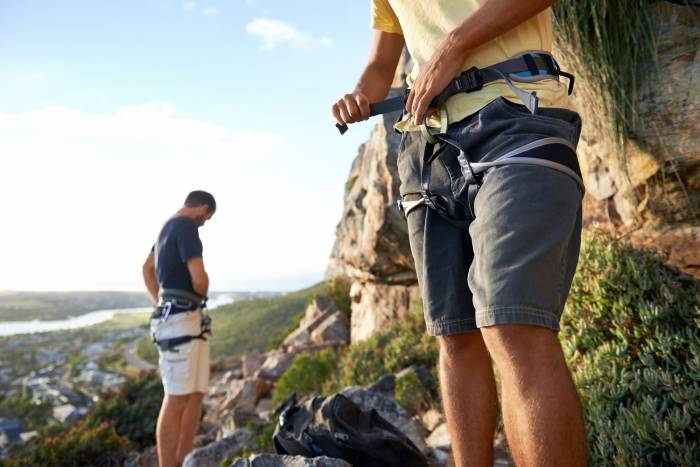Gear Junkie contributor T.C. Worley participated in the 2010 JanSport Rainier Seminar, an annual mountaineering clinic and ascent of Washington’s Mount Rainier, this year led by International Mountain Guides.
STORY AND PHOTOS: T.C. WORLEY
“Ten minutes to the crater ridge!” That was the shout from behind, and it was just in time — my legs were turning to rubber. We were above 14,000 feet on Mount Rainier’s massive face. The voice — a guide on the rope line in the rear of the group — gave me a surge of energy as we neared the summit on what is arguably America’s most iconic mountain peak.

It was late June, and I’d been invited to join an annual Mount Rainier climb sponsored by JanSport. About 55 miles southeast of Seattle, and rising to 14,410 feet, Rainier is the most glaciated peak in the continental U.S. Thousands of climbers attempt its summit every year, most by some variation of the “Disappointment Cleaver” route my team took in June.
The climb, a multi-day feat for most parties, starts from the Paradise trailhead at 5,400 feet. To reach the top, a trek and climb of about nine miles plus a thigh-trashing gain of more than 9,000 feet of elevation is required. Though it was past summer solstice when my group arrived, there was still 14-foot-tall snow banks in the parking lot.
The Rainier seminar, an annual climb, echoes JanSport co-founder Skip Yowell’s original goal of having fun in life — not being stuck behind a desk wishing he was. Skip remains the face of his company, which was founded in 1967, and JanSport continues to be one of the most recognizable backpack companies in the world.

Our group on Rainier was a diverse one, including retail partners from as far away as Finland. There were outdoor-industry advocates and even a member of the U.S. Department of the Interior who came from Washington D.C. across the country to Washington state for the climb. Each of us shared an affection for the outdoors and arrived at Mount Rainier National Park pretty fired up for the climb.
The first day of our seminar, led by International Mountain Guide instructors, was spent checking gear, acclimatizing and going through a snow-school course at Paradise. It was an introduction to the mountain environment above, where snowfields stretch thousands of feet and glaciers creak and move like living things. Unlike most 14ers in the U.S., Rainier requires a special skill set, including rope-team and glacier-rescue knowledge for treading onto the crevasse-laden slopes above 10,000 feet.
Day No. 2. Time to climb! We began the ascent toward the top with a 4.5-mile slog to Camp Muir. The “camp” is actually a small group of permanent structures, including primitive bathrooms. It sits at about 10,000 feet and is staffed by climbing rangers throughout the year.

The group began under low clouds out of Paradise, mingling with day-hikers and sightseers on the trail. Thick mist soaked my face and hair. I settled into the trudge toward Muir, a five-hour feat, somewhere high above. Camera at my side, I’d hike fast ahead to capture photos of the team as they inched upward against the white.
Bob Marley tunes played over Camp Muir while I settled into my new digs — the digs being essentially a mobile-home-size plywood box that the guide services share. My group stayed at Muir one night. A breakfast of chocolate-chip pancakes, hashed potatoes and bacon would come in the morning. IMG guides know their way around a skillet as well as a mountain!
“Good morning Camp Muir, anybody copy?” A handheld radio screeched as we got ready on the morning of our third day. The group roped up, clipped into crampons, and prepared to tromp among Rainier’s glacial crevasses and under icefalls for final a preparation day.

Once climbers leave Camp Muir, they are officially traveling on a glacier. For this reason, all teams are roped. While routes have been probed for safety, teams are still likely to cross snow-covered crevasses. A fall either in a crevasse or down the mountain could be fatal.
A short but gorgeous trek from Camp Muir brought us to 11,200 feet and the tent camp of Ingram Flats. I pestered my guide into stopping several times for photos. This new alpine world was too beautiful to hurry through. Along the way, I took in postcard views in every direction. In the distance, volcanic peaks of the Pacific Northwest popped from the land.
Ingram Flats was our jumping-off point for summit day. A small lot was staked off for safety. Now that our team was on the glacier, crevasse danger was a real threat. Only areas that had been probed and marked with stakes were considered safe to travel on.
continued on next page. . .





